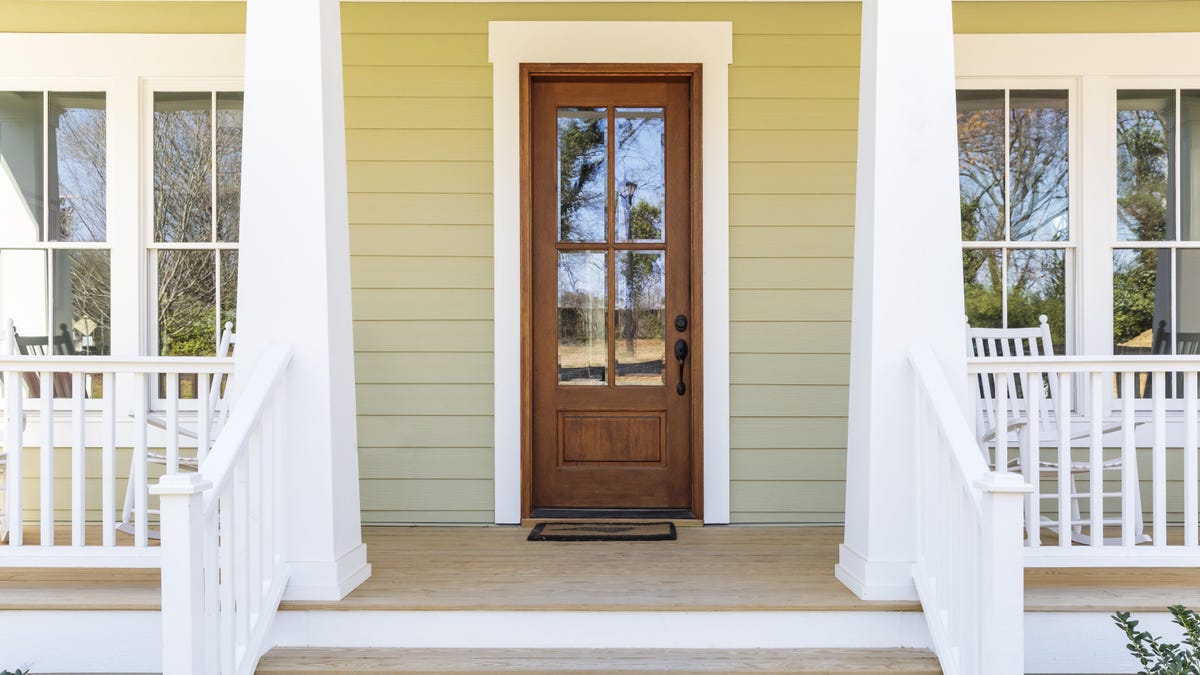Prepare Your Patio for Winter Now

Adding fresh paint to your porch or deck is a good way to freshen up your outdoor space and make it more inviting. But paint does more than just add color—it also acts as a moisture barrier and protects against freeze and rot damage. Planning ahead now, when the weather is warm and dry — ideal conditions for outdoor painting — can save you money on more expensive maintenance down the road.
Tools and materials
For this project you will need:
Inspect the porch for damage
First, inspect the surface of your porch paint. If you have any cracks, peels, or bubbles in your paint, it’s definitely time for some maintenance. Some often overlooked areas are under the bottom of your porch railing, the underside of open steps, and any other nooks and crannies that can trap moisture. Other things to look out for are any signs that the wood underneath is damaged. Apart from chips, any soft spots on your porch boards or railing are a sign that you need repairs.
Prepare the surface
Before repainting, the surface of the porch should be prepared. This can be achieved with high pressure washing, sanding and scraping to remove any loose bits of old paint and smooth the surface for a new coat. While you are preparing the surface, you should look for any damaged parts. If you have a cracked board, any loose pieces or splinters anywhere, you should replace the broken pieces before painting. If there is more serious structural damage to the porch, such as the legs that hold it up, the poles that anchor it to the ground, or the stringers that hold up the floorboards, you should see a professional before proceeding with the repair.
Check Forecast
Applying paint will work best if you have two to three days of dry weather to let it dry well before it rains. Also, paint can bubble at temperatures above 85 degrees Fahrenheit, so keep that in mind when you check the weather forecast. Conversely, paint may take much longer to dry if the temperature is below 40 degrees Fahrenheit. This is why painting in late summer or early autumn is ideal. In hotter climates, it is recommended to use a special paint that is resistant to heat and sunlight. In places with high humidity, you can use a special additive that prevents the formation of mold and mildew.
Apply a primer
Once the surface has been prepared and any damage has been taken care of, the primer can be applied. When using an exterior primer, start by painting hard-to-reach areas, such as under porch railings, around columns, rafters, and the ceiling. Even if you can’t see the surface, it’s important to apply a coat of paint to all exposed parts to prevent rotting or cracking in the winter. Once you’ve done all the work with the brush, use the roller to pick up the floor and stairs. Let the primer dry completely before moving on to the paint color or colors.
Apply top coat
Apply a top coat of paint to the railing and any other small porch details. Then you should use a roller to paint the floor. Keep in mind that if you are using a color other than the primer, you may need to apply two coats to get an even color. Once the surface is covered, let it dry for 24 hours before walking on it to avoid any shoe marks. Once your porch is dry, inspect it for places you may have missed to make sure you’ve got a good seal.